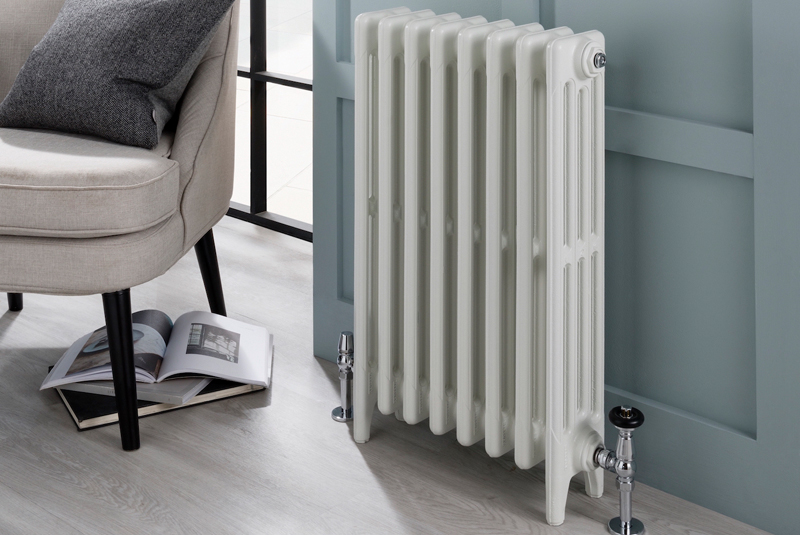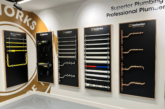
If panel radiators are your default sell, you could be missing out on the higher margin opportunity designer radiators present.
Grant Dixon, Business Development Director at The Radiator Company, looks at how merchants can take advantage of this growing market.
During any refurbishment project, radiators are often the last thing the end-client considers, as they can often be viewed as more functional than decorative. However, introducing the concept of higher value, designer radiators early on in the process can add to the project’s value for both merchants and their customers — and add a beautiful finishing touch to any room.
As the market for designer radiators continues to grow, the skill for the merchant is in identifying the opportunity for a higher margin sale. It’s all too easy to take the usual order for panel radiators, however the more discerning merchant customer will recognise that homeowner’s eyes can be opened to the wide variety of materials, colours, finishes and contours now available — meaning radiators need no longer be simply a requirement or even an afterthought, but an integral part of any room’s interior design.
Material of choice
Suitable for older properties with poor insulation, cast iron radiators are ideal — emitting a more constant heat. Although they do take longer to heat up, cast iron radiators release heat slowly which helps to maintain a stable building environment. In recent times cast iron has also become more of a design choice than a necessity, so they are found in many modern properties too. Typically used in living rooms, bedrooms, kitchens, hallways and dining rooms, cast iron radiators are available in a wide range of finishes including mottled, metallic and textured effects.
A common choice due to its low price point, mild steel is cheap to manufacture and can be easily shaped to accomplish design intent. Steel multi-column radiators also provide the highest levels of customisation, offering the largest ranges of sizes — including up to 25 different heights. Available in a variety of galvanised colours finished by hand — including a number of unique, “on trend” finishes — these radiators provide customers with an aesthetically stunning alternative to cast iron.
Whilst the majority of radiators sold in the UK are built from either mild or stainless steel, aluminium has become increasingly popular for its potential for long-term energy savings. Whilst aluminium is higher in cost, it is a superconductor — meaning it is more efficient at conducting heat and uses less energy to reach a comfortable temperature. This not only means it reaches its optimum temperature quicker, but it cools down quickly once switched off — giving the homeowner more control over room temperature.
Designer radiator companies invest heavily in high quality literature, including beautiful lifestyle shots to excite your customers’ end client, accompanied by all the information you need to make specification simple. Indeed, arming customers with the right sales collateral is half the battle, so always be mindful of any opportunity to give them a brochure to show to their clients. It’s a great way for them to demonstrate they’ve given the project some careful consideration and will also differentiate them at the quoting stage.
Size and design
Traditionally, it has been the norm to place radiators on external walls under windows. This is because the external wall is predominantly the coldest areas of any room. However, as housing stock has become more insulated, the position of a radiator no longer has to be led by this theory. Accordingly, design-led radiators have widened the market and created the opportunity to take advantage of the more narrow, awkward spaces found within a room.
In fact, they are now being adopted as a key design element and are helping challenge this external wall custom — particularly with the introduction of vertical column radiators.
Ideal for freeing space in a room, their tall slim structure make them a great solution for smaller rooms compared to traditional horizontal radiators that can take up vital wall space. In addition — and contrary to popular belief — vertical radiators have an equal BTU output to horizontal radiators and can be customised to meet the heat requirements of any room.
Increasingly popular are sectional designer radiators which provide customers with a fully customisable solution dependent on their requirements. Sectional radiators offer homeowners the opportunity to decide where the radiator would best fit into the room layout and then sizing it accordingly.
As radiators have evolved, so have the options available in terms of design, materials and finishes. Radiators are no longer seen merely as a functional addition to a room but have become an essential design statement. For merchants, learning more about the project at hand — and creating an opportunity for designer radiator sales — is a great way to maximise profitability, whilst providing a first-class service to installers and ultimately exciting the end client.
For more information about the full range of bespoke radiators from The Radiator Company, visit www.theradiatorcompany.co.uk.









